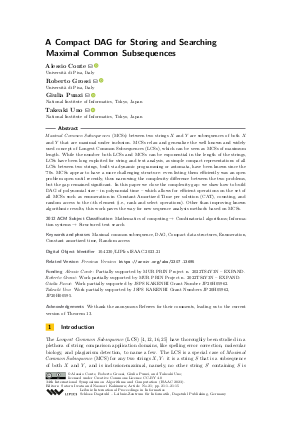LIPIcs.ISAAC.2023.21.pdf
- Filesize: 0.83 MB
- 15 pages

 Creative Commons Attribution 4.0 International license
Creative Commons Attribution 4.0 International license












Feedback for Dagstuhl Publishing